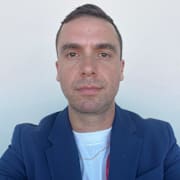Chris Foerster Explains Why the 49ers Rarely Run from 11 Personnel

SANTA CLARA -- The 49ers are somewhat predictable when it comes to using 11 personnel.
That's a formation with three wide receivers. The 49ers use those pretty much only when they have to -- second and long or third and medium to long. And when they do use three wide receivers, they pass a whopping 77 percent of the time -- fifth-most in the NFL. They're not balanced from that personnel grouping.
I recently asked run game coordinator Chris Foerster why the 49ers are so reluctant to run the ball out of 11 personnel. His answer was fascinating.
“The defense can dictate to you a little bit more," Foerster said. "21, 22, 12, you have a little more flexibility, regardless of what the defense does, you can still find a way to run the ball in an effective way. In 11, it's kind of, ‘oh, well you can't run there,’ so you got to run there, or you got to throw it. I go back to when I was in Indianapolis, we didn't care. It's like, fine, you want to play the run. We'll throw it every snap with those great receivers and the quarterback. Oh, you want to play the run, then you know you're going to play the pass. Well then, we got Edgerrin James and we're going to run against these very clean boxes because you're going to defend the receivers that we had. So, it's Catch 22, right? And then you've been other places where you say you don't want to spend your game at 11 because if they say go ahead and throw it and you're not as good at throwing it. And so whether it be a quarterback, receiver, whatever your situation is in that given team, that given year. So that's the tradeoff. 11 is a little harder. It just depends. Like I said, sometimes it'd be easy because of your quarterback.”
TRANSLATION: If Brock Purdy were truly elite, the 49ers would use 11 personnel more often. But opposing teams always want to take away the 49ers' run game and force Purdy to beat them with his arm, and the 49ers don't want Purdy to throw 50-plus times in a game, so they use three-receiver-formations as sparingly as possible.
Sounds like the 49ers shouldn't make Purdy one of the highest-paid players in the league.
